Year 9 History Trip to Ypres
On the 14th and 15th of March, Year 9 went on a history trip to Ypres, Belgium. We started off by making our way to the Euro tunnel which we took to cross the English Channel. After arriving in France and continuing our journey to Ypres, we visit the Bayernwald trench system where we learn that not all trenches were made in a set pattern, the trench that we were able to experience was a German trench and interestingly the trench was curved in different places and when we went inside to explore, it was rather challenging to remember which way you came from. The advantage is that if shells exploded in this trench, it would only kill the men in that area, as shock cannot travel around bends. During this trip, we also had the privilege of experiencing a British which was quite similar and more like the ones we learnt about at school, with quite a rigid structure, although the similarities between the trenches were that the basic methods of constructing the trenches as the same, using the same materials as well, which was wood in this case.
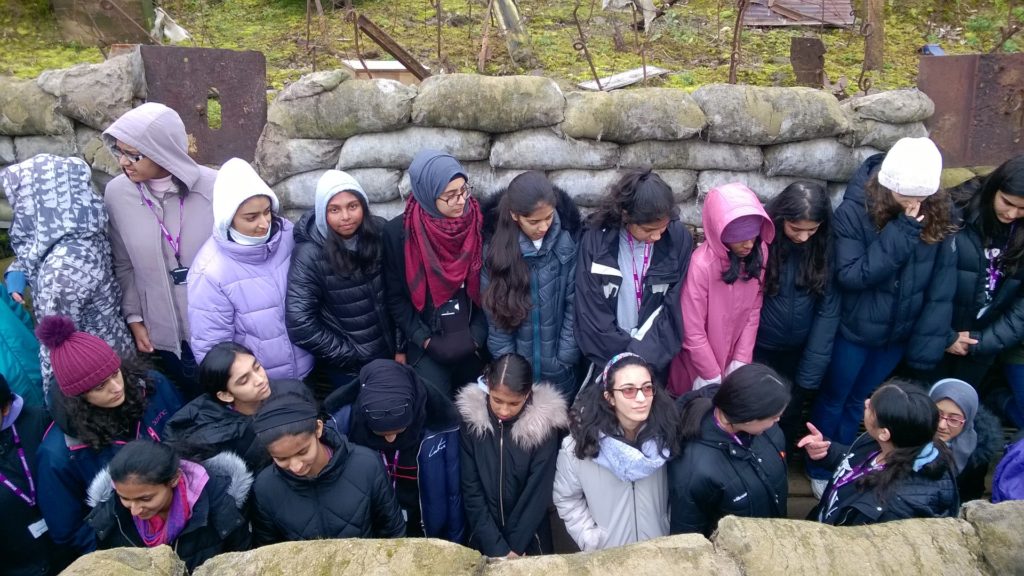
We also visited a battlefield area from World War I called Hill 60, it was an unnatural hill created from the soil removed after the construction of a railway and it was very important strategically for the battles because it was higher ground, which was a big advantage. During the Great War, the dominance over the hill often changed between Germany and the Allies. We were told that the remains of many soldiers from both still lie there because both sides dug tunnels underneath the hill and those were filled with mines. The battle here was fierce and when we went there we noticed markings on the ground indicating the position of the German front line and the British front line and to our surprise the distance between them, the no-mans land, was only about 5 metres. The name of the hill, Hill 60, was quite interesting as we wondered what the significance of the number 60 was and it turned out to be the number of metres the hill was above sea level.
Another exciting highlight of our trip was being able to go to chocolate shops and purchase some Belgian chocolate. There were so many varieties of truffles and especially the different shapes and designs of the chocolates were tempting. We then went to a restaurant nearby to have dinner.
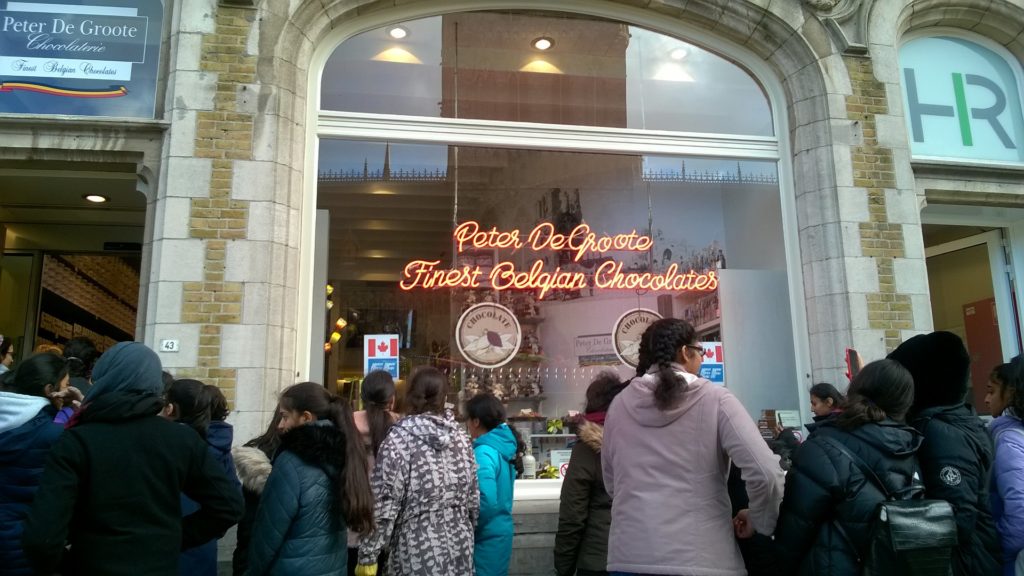
After we had our dinner we walked down to go and see the Menin Gate. The Menin Gate is one of the most visited war memorials in Western Europe and we were lucky enough to go and see a ceremony there. The Menin Gate bears the names of more than 54,000 soldiers who fell in the Ypres Salient before 16 August 1917 and whose bodies were never found. It was a very moving and emotional experience to see that so many men had died to make our country the way it is today. During the ceremony three soldiers in uniform played the Last Post and all the schools who came to see held a two-minute silence in memory of all the men who died in the war. When this was over we then went back to the hotel to rest for the next day.
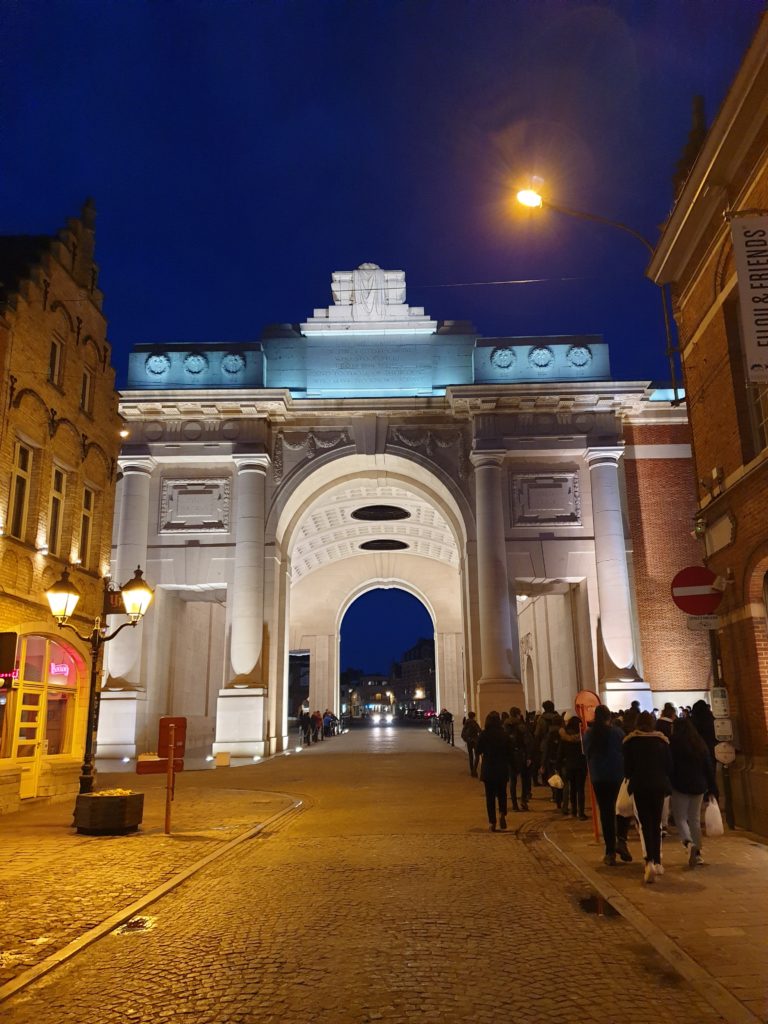
To get a well-rounded view of all the different people who died during World War I we also visited a Canadian site called the St Julien memorial. Here we learnt about the use of gas and some volunteers tried on the different gas masks so we could see the development from first soldiers having to urinate onto their socks and hold it to their mouth so the ammonia would protect them to the well-developed gas masks we have today. It was a very interesting experience and helped us all realise how lucky we are today and the true horrors the soldiers had to go through.
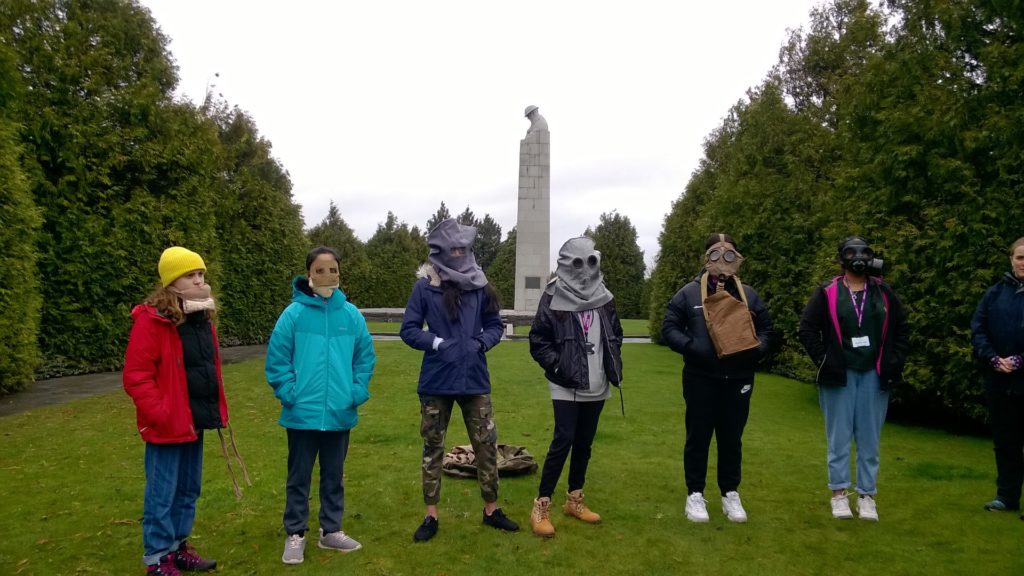
At one of the memorials we also saw the grave of an amazing man named Captain Noel Chavasse. He was a medical doctor and a British Army officer and one of only three people to be awarded two of the renowned Victoria Cross awards; one was after his death in 1917. Captain Chavasse was a true hero and saved many of his soldiers’ lives, reluctant to leave them. He would go into no man’s land to rescue his wounded soldiers; very few people would do this as there was a high risk of being killed. He died a noble death as he died from a wound while dragging one of his soldiers to safety. He was a truly remarkable man and it was really inspiring for us all to see his grave and learn about him.
Before we took our journey home, we visited one last memorial called Lijssenthoek military cemetery. The cemetery is the second largest Commonwealth War Cemetery in Belgium (with 10,785 burials; 9,901 of which are all Commonwealth soldiers, the remainder mainly French and German). It was really astonishing to see so many graves and know that these were once young men who died fighting for their country. While talking to Frank, our guide, we found out that among the graves there were also 3 women. One was of a soldier who was only found out to in fact be a woman after she died. The other a nurse named Nellie Spindler and the last a mother who had wanted to be buried with her only son so the head gardener dug a hole and buried her ashes behind the grave of her son. This was done secretly and the story was passed down to his son who was the next head gardener and hence we now know today.
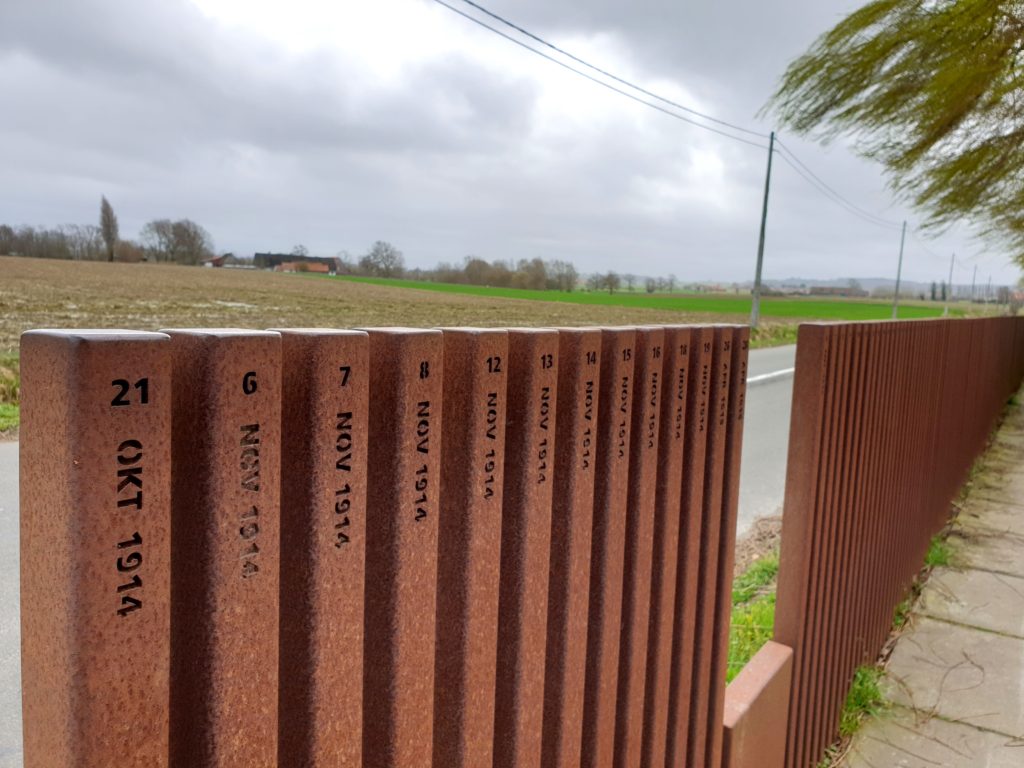
Our guides, Beth and Frank, had managed to find a grave of a man who died in the war who was from Northwood and lived near our school. For us this was really touching and moving as we could relate a lot to this and knowing that we could go back home thereafter when he couldn’t really made us think about all the things these men gave up for us. A girl in our class laid a wreath on his grave and we all held a one minute silence in commemoration. We all then lined up and each of us in the year including the teachers stood in front of a grave and then placed our hand on the top and bent down so we were face to face with the grave in front of us. This was really sad and as we looked down upon the grave we felt a real connection and very emotional to know that this person was a father, husband or a son and they died at such a young age to fight for their country and for the world we live in today.
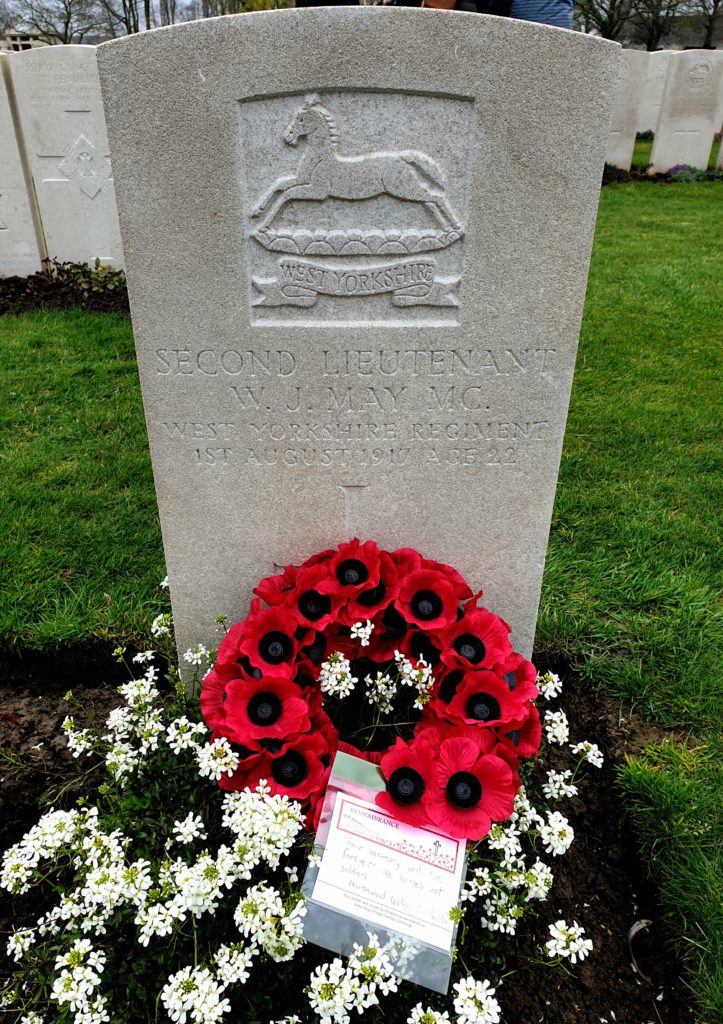
Overall our trip was absolutely amazing we had loads of fun while learning so much about the soldiers and trenches in World War I. It was really great to actually see most of the places we learnt about in class and we are all privileged to have been able to see and learn so much.
By Adhira Ashok and Shiara Samarasinghe, Year 9